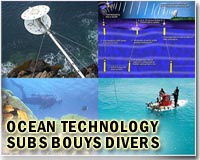| . |  |
. |
Tokyo (AFP) April 20, 2011 Japan on Wednesday formally banned the shipment and consumption of a small fish caught off its Fukushima prefecture where a crippled nuclear power plant has leaked radioactive water into the sea. The ban applied to a small fish known as konago, or sand lance, the health ministry said. Fishing fleets in the area had already refrained from catching the species since elevated radiation levels were found earlier this month. Since the March 11 earthquake and tsunami hit and damaged the plant, forcing dousing operations at its reactors, some radioactive runoff has leaked and low-level contaminated water has had to be dumped in the sea. Officials have said that ocean currents would quickly dilute the contaminants, radioactive iodine and caesium, and said there was no wider threat to the marine environment or public health from eating seafood. Japan imposed a new limit of 2,000 becquerels per kilogram for iodine and 500 becquerels per kilogram for caesium in seafood, after a konago caught off Ibaraki prefecture, south of the plant, showed iodine above this level. A konago sample taken off Fukushima Monday found 3,900 becquerels of iodine-131 per kilogram and 14,400 becquerels of caesium per kilogram, the ministry said. Local fishermen in Ibaraki have voluntarily refrained from catching konago. "Actually no-one is fishing the konago there now because of the heavy disaster damage in Fukushima," said a health ministry official. "In Ibaraki, fishermen have voluntarily stopped catching konago. So there is no risk of contaminated fish being sold at markets. "But the health ministry called for the government to impose an official ban on it because some people, like fishermen, may consume some on their own." Iodine above legal limits has been found in vegetables, dairy products and mushrooms near the plant, triggering some shipping bans in Japan and overseas.
Share This Article With Planet Earth
Related Links Water News - Science, Technology and Politics
 New count made of world's barrier islands
New count made of world's barrier islandsDurham, N.C. (UPI) Apr 19, 2011 Earth has more barrier islands, strips of sand parallel to a coast but separated from it by estuaries or lagoons, than previously thought, U.S. researchers say. Scientists at Duke University and Meredith College used satellite images, topographical maps and navigational charts to identify a total of 2,149 of the offshore deposits of sand and sediment, a significant increase of the 1,492 ... read more |
|
| The content herein, unless otherwise known to be public domain, are Copyright 1995-2010 - SpaceDaily. AFP and UPI Wire Stories are copyright Agence France-Presse and United Press International. ESA Portal Reports are copyright European Space Agency. All NASA sourced material is public domain. Additional copyrights may apply in whole or part to other bona fide parties. Advertising does not imply endorsement,agreement or approval of any opinions, statements or information provided by SpaceDaily on any Web page published or hosted by SpaceDaily. Privacy Statement |